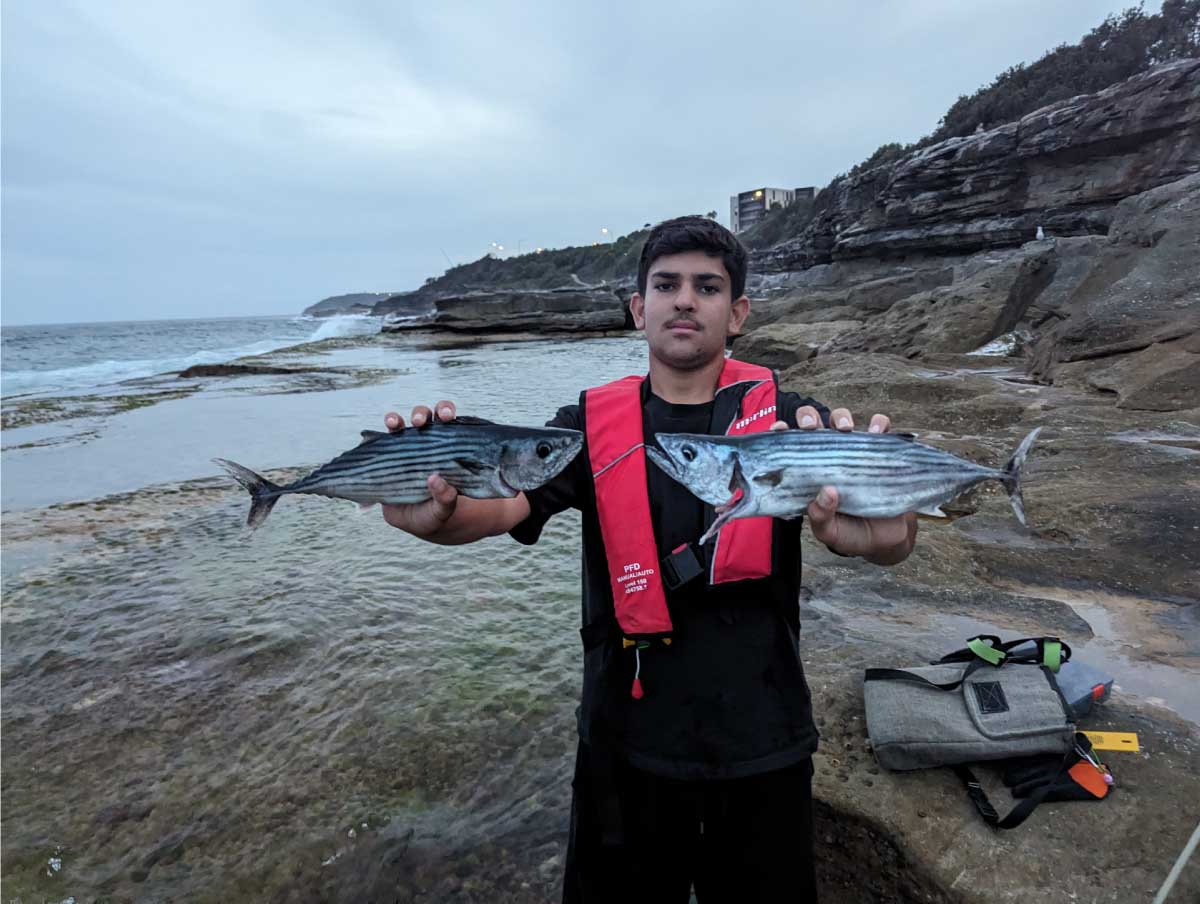
Slow Pitch Jigging Explained Slow-Pitch Fishing from Shore and Boat
Slow Pitch Jigging from the Rocks in Australia: A Complete Guide for Shore Anglers
Slow pitch jigging is often associated with boat fishing in deeper waters but shore-based anglers are increasingly using this technique from the rocks to target predatory fish such as kingfish, snapper, bonito, and mackerel. When done correctly, slow pitch jigging from the shore can be a deadly way to entice aggressive strikes from fish that lurk near rocky headlands and deep water drop-offs.
In this guide, we’ll explore the best jigs to use, how to rig them, retrieval techniques, and the prime locations to target when shore-based slow pitch jigging.
Slow pitch jigging gets its name from the "slow pitch" motion used when working the jig. Unlike traditional high-speed vertical jigging, which involves fast and aggressive rod movements, slow pitch jigging is based on controlled, rhythmic rod lifts (pitches) that allow the jig to flutter and suspend in the water column, imitating a dying or injured baitfish.
Here’s why it’s called slow pitch jigging:
✅ "Slow" – The technique focuses on slower, deliberate movements rather than rapid jerks. This keeps the jig in the strike zone longer, making it highly effective for fish that aren’t chasing fast-moving prey.
✅ "Pitch" – A "pitch" refers to each small rod lift (or crank of the reel). Instead of a continuous high-speed retrieve, slow pitch jigging involves short rod lifts, pauses, and controlled drops to make the jig flutter and dart erratically.
How Slow Pitch Jigging Works
- 🎣 Lift the rod tip gently (small pitch) to make the jig rise.
- ⏸ Pause briefly to let the jig flutter down naturally.
- 🔄 Repeat in a slow, rhythmic pattern, adjusting the speed and intensity based on fish behavior.
This technique is highly effective because it mimics a wounded baitfish, making it irresistible to predatory species like snapper, kingfish, trevally, and reef fish. Would you like me to write a guide comparing slow pitch jigging with other jigging styles?
Why Use Slow Pitch Jigs from the Rocks?
Unlike conventional metal jigging techniques that rely on speed slow pitch jigging is all about subtle movements that mimic a wounded baitfish. This finesse approach can be extremely effective from the rocks especially when targeting fish that hold in deeper water near structure.
✅ Effective for a Wide Range of Species: Kingfish, snapper, amberjack, trevally, and mackerel frequently respond to slow pitch jigs worked from the shore.
✅ Lethal on Suspended and Bottom-Dwelling Fish: The slower more controlled action keeps the jig in the strike zone longer.
✅ Minimizes Snags: Traditional fast jigging can lead to more snags in reefy areas, whereas slow pitch jigs allow for a more controlled presentation.
Best Slow Pitch Jigs for Shore Jigging
When fishing from the rocks, choosing the right jig is crucial. The Zephyr Jig (ReproBaits) is an excellent choice, designed for effective vertical and horizontal jigging presentations.
🔥 Zephyr Jig (30g) - Best for Shore-Based Slow Pitch Jigging
✅ Slim profile for long-distance casting.
✅ Designed for slow fluttering action on the drop.
✅ Available in multiple colors to match baitfish in different conditions.
✅ Works well with assist hooks to reduce snags.
The Zephyr Jig is especially useful when targeting kingfish, tailor, and snapper near rocky headlands and deep water drop-offs.
How to Rig Your Slow Pitch Jig from the Rocks
Proper rigging is essential for success. Here are the best ways to rig slow pitch jigs from the shore:
1️⃣ Top Rigged Assist Hooks: When bouncing jigs off the bottom in reefy areas, rigging assist hooks at the top reduces the risk of snagging.
2️⃣ Double Assist Hooks: For pelagic fish like kingfish and mackerel, use assist hooks at both the top and bottom to increase hookups.
3️⃣ Single Inline Hooks: This setup minimizes foul hooking and is great when targeting snapper and other reef species.
Using high-quality assist hooks like ReproBaits Assist Hooks can make a significant difference in hook-up rates.
Shore-Based Slow Pitch Jigging Techniques
The key to effective slow pitch jigging is mastering a controlled and rhythmic retrieve. Here are three proven techniques:
1️⃣ Slow Lift & Drop:
✅ Best for snapper, trevally, and grouper.
✅ Let the jig sink to the bottom, then slowly lift the rod tip and let it flutter down.
✅ Most bites occur as the jig falls.
2️⃣ Mid-Water Twitches:
✅ Ideal for kingfish and tailor.
✅ Use quick rod twitches to create a darting action in the middle of the water column.
3️⃣ Bottom Bouncing:
✅ Excellent for working structure and reefs.
✅ Let the jig hit the bottom, then lightly hop it along while maintaining tension.
Best Locations for Slow Pitch Jigging from the Shore
Some of the best areas to target fish with slow pitch jigs from the rocks include:
📍 Sydney Harbour Headlands – Great for kingfish, snapper, and trevally.
📍 Northern Beaches Rock Platforms – A hot spot for bonito, mackerel, and tailor.
📍 South Coast NSW Rock Ledges – Deep drop-offs make it ideal for slow pitch jigging.
📍 Western Australia’s Rugged Coastline – Perfect for targeting powerful reef fish.
Why Slow Pitch Jigging from the Rocks Works
Slow pitch jigging from the shore is an underrated but highly effective technique that allows anglers to target deep-water species without a boat. Using the right gear like the Zephyr Jig combined with proper rigging and retrieval techniques can significantly improve your catch rate.
📢 Upgrade Your Shore Jigging Game! Get the Zephyr Jig today and start targeting big fish from the rocks! Buy Now!

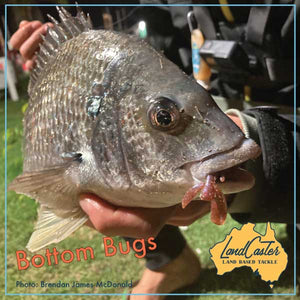
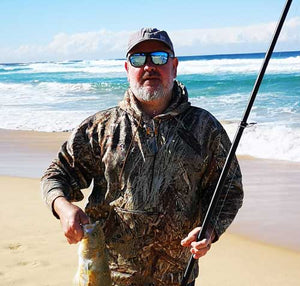
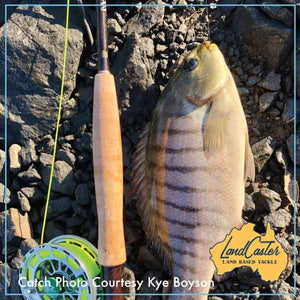
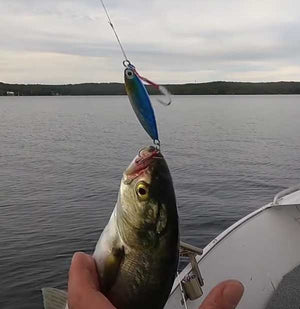
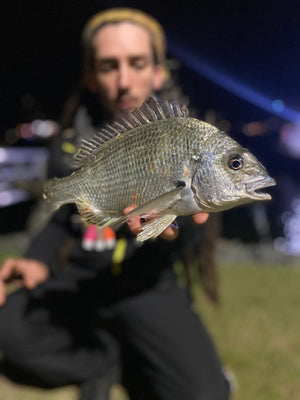
Leave a comment